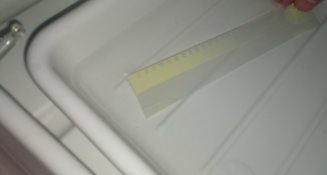I tend to trust more what Grant & Haist say about not all Ag being developed. I've reported the extract, above. I think it's correct what they say about it.
Grant Haist is more likely to be correct on this than any random internet claims - and it's worth noting that one of the peer reviewers was Ron Mowrey (Photo Engineer). As I understand it, there were omissions related to commercial sensitivities, especially in terms of film technology that was in R&D at the time, but overall it gives a good overview of fundamental emulsion & chemical behaviour. It is now possible to more effectively sensitise & 'use' the silver, but not in the way that '138s' proposes. Instead in negative films it allows either a lower quantity of silver/ m2 to be used or a higher effective speed for the same amount of silver because it can be better sensitised and used.
Sorry, I've not explained it clearly. What you say is true with classic home reversal, this is a calibration I made with a hacked Rodinal and Sn fogging 2nd developer :
View attachment 243842
We see there the same gradient not matering development time, we have some DMax improvement with extended 1st developer time. The top 6 min curve was using a different solvent...
It is a calibration I made personally, so I'm well aware of that.
What I was trying to propose is a reversal variant with minimal silver solvent effect, with enhanced energy, with partial light re-exposure, and with promoted infectious development of the unused silver, to reach (say) 4.0DMax with Delta 100, while having clear highlights. In that case, with little silver solvent effect, 1st development gradient controls the slide contrast.
My suposition is that a silver solvent rich first developer limits actual development, as unexposed little silver crystals around big exposed crystals are disolved by when infectious development would attack them, so no density-contrast increase would take place after that point.
A more energic developer would develop more before touching unexposed crystals are destroyed by the solvent... so what you say is true for regular BW reversal.
...but consider that I was talking about another situation: no silver solvent, when this limitation if not acting then 1st development time rules on contrast, which follows Mr. Woods recommendation, and he is the one offering 4.4D from Delta 100
Disclose the developer formulations you are using for first developer, second developer and reversal bath. Otherwise your 'data' is just random numbers. It currently sounds like you are desperately trying to contravene the inherent reversal behaviour of the film in a mistaken belief you can make it behave as you arbitrarily wish.


 Excuse me, but I've laughed a lot at your wording.
Excuse me, but I've laughed a lot at your wording. 


 ) Can't be many threads where any OP has not responded at least once in 198 posts since his opening post
) Can't be many threads where any OP has not responded at least once in 198 posts since his opening post